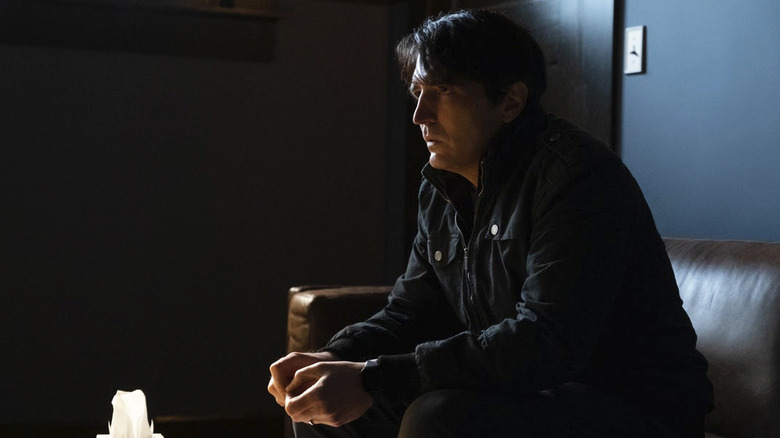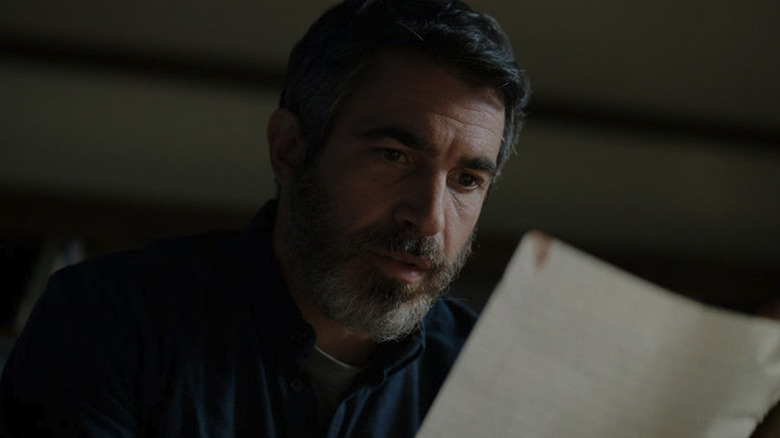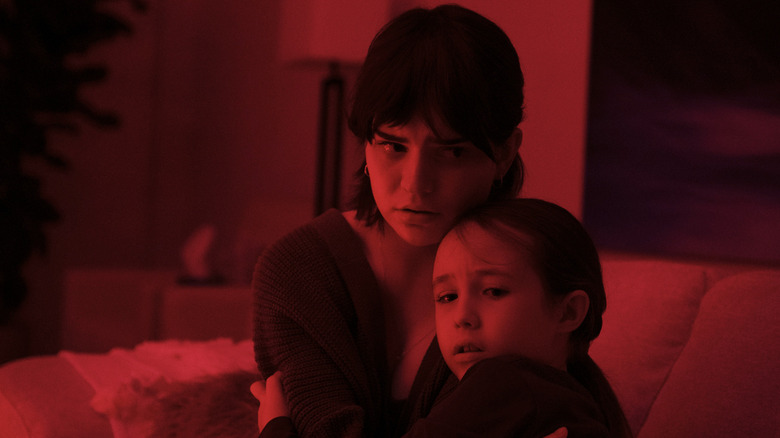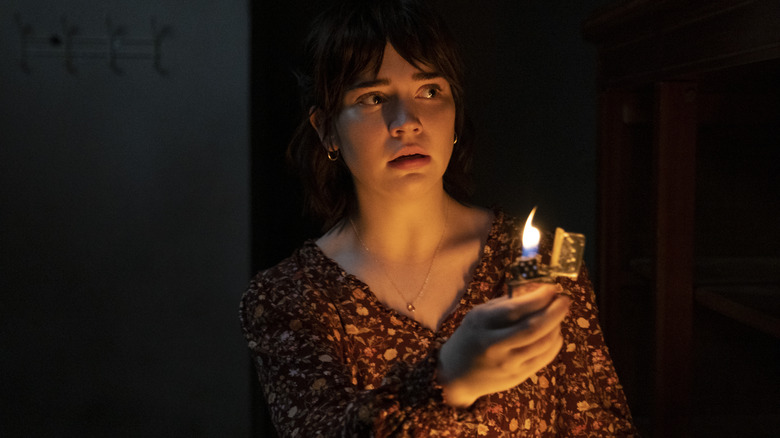How The Boogeyman Differs From (And Expands) Stephen King's Original Story
This post contains spoilers for "The Boogeyman."
Film adaptations of Stephen King stories have been on a somewhat steady drip since the mid-1970s, but after the immense box office success of "It" in 2017, the spigot has fully opened. "The Boogeyman," the first of 2023's two planned King movies ("Salem's Lot" is slated for release later in the year), is in theaters now, and it's based on a short story that was first published in 1973.
Several of King's short stories or novellas have been adapted for the screen before, of course, with "The Shawshank Redemption" probably being the most famous, but "The Boogeyman" short story is incredibly barebones. So how did director Rob Savage and writers Mark Heyman and Scott Beck & Bryan Woods expand it into a full-fledged feature? Here are the key differences between the short story and the movie version of this unsettling tale.
The short story
The short story is set in the office of a psychiatrist named Dr. Harper. A patient named Lester Billings recounts the story of how Billings' three young children died in recent years. At first, Billings says he killed all three kids. But soon, he reveals he didn't actually murder them himself; instead, an otherworldly creature called the boogeyman did. When Billings or his wife would put the kids to bed, they would cry — and Billings, an overtly racist and misogynistic exemplar of early 1970s toxic masculinity who didn't want his kids to grow up to become weak, refused to take their warnings seriously when they would point at a closet door and say the word "boogeyman." Until they started to die.
Billings tells Harper how one night he caught a glimpse of a slithering creature out of the corner of his eye, one with claws. After the first two children died, he and his wife had a third child and moved to a different part of town, and their lives seemed to improve. But the creature eventually tracked them down, and in a fit of cowardice, Billings moved his infant son out of the master bedroom into another room because he knew the creature would go after the kid instead of Billings himself. And it did — he recalls running into the kid's room after hearing a scream and encountering the creature shaking his boy so hard that it snapped the child's neck right in front of him.
At the end of the session, Billings is about to leave but discovers — twist! — Dr. Harper has been the boogeyman the whole time, and the story ends with the creature holding a Dr. Harper mask in its clawed hand, the dreaded implication being that Billings is about to be killed.
The movie
The film adaptation takes Billings' sense of guilt and applies it to Dr. Harper (Chris Messina, notably not secretly the boogeyman this time), who has lost his wife in a car accident not long before the film opens. Harper's inability to process his wife's death causes a rift between him and his two daughters, Sadie (Sophie Thatcher) and Sawyer (Vivien Lyra Blair), who are naturally traumatized by the loss of their mother.
In one of the movie's standout scenes, Lester Billings (David Dastmalchian) comes to Harper's home office to tell his story (the film opens with one of Billings' young children being murdered in its crib, which happens just off camera with blood splattering into frame), and Dastmalchian really makes a meal of the scene in an effective, spooky way. One key difference from the short story is that he brings along a drawing one of his kids made of the creature and shows it to Harper, describing it as "the thing that comes for your kids when you're not paying attention."
"I started to think, maybe if you think of a thing long enough, and believe in it, it gets real," Billings says in the short story. "Maybe all the monsters we were scared of when we were kids, Frankenstein and Wolfman and Mummy, maybe they were real." By introducing that drawing into the Harper's home, the movie is tapping into that idea from the source material in a subtle but effective way.
Instead of being killed by the creature as he (almost) is at the very end of the short story, Lester Billings walks upstairs in the Harper family home and hangs himself; he's found by Sadie, adding another layer of trauma onto her life.
But worse than that, he has introduced the creature to a new feeding ground of frightened people. The film's story has really just begun.
Similarity to another Stephen King creation
When Sadie meets Billings' wife later in the film, the wife explains the creature follows its prey, glomming on to folks who are hurt and vulnerable. She also says the boogeyman likes to play with its food, which represents a thematic connection between the type of being who would orchestrate an elaborate, dramatic ruse in the short story solely in order to kill Billings and one that would slink around to ramp up the scares for Sawyer and Sadie as it does in the film. "I think it's been around forever," Billings' wife says, drawing a connection between the boogeyman and another iconic Stephen King villain: It, the alien life force who takes the form of Pennywise the Clown and taunts its prey because the more fear it can elicit, the better its victims will taste.
That connection is also underlined late in the film when the creature finally comes face to face with Sadie, revealing its hideous full form to her by peeling open its own face (in a callback to the short story's version of the Dr. Harper mask) and sucking the life out of Sadie, almost like the "deadlights" scenes in "It."
As you likely already know, Sadie survives by calling upon the spirit of her dead mother in the form of a flame to help defeat the creature. "It's this eternal demonic thing that we just call the boogeyman, but it's basically this force of darkness and that we should kind of counterbalance with some spiritual force of good," Savage tells me in an upcoming interview. "It's one of the hallmarks of a lot of Stephen King, is there is always hope and humanity even in the darkness. It felt of a piece with his work to go that far."
"The Boogeyman" is in theaters now.



